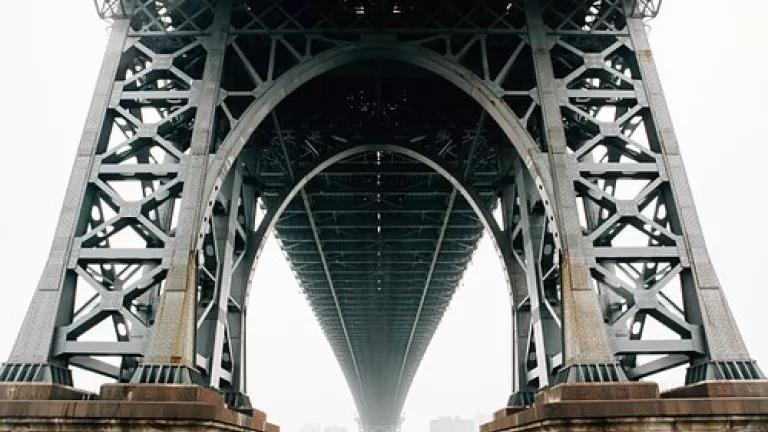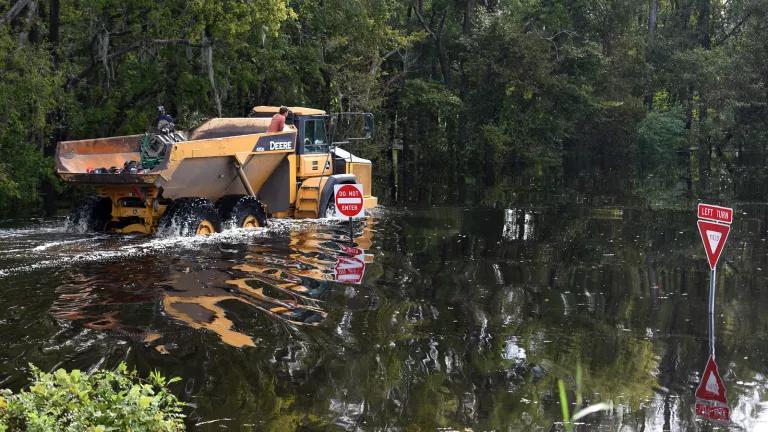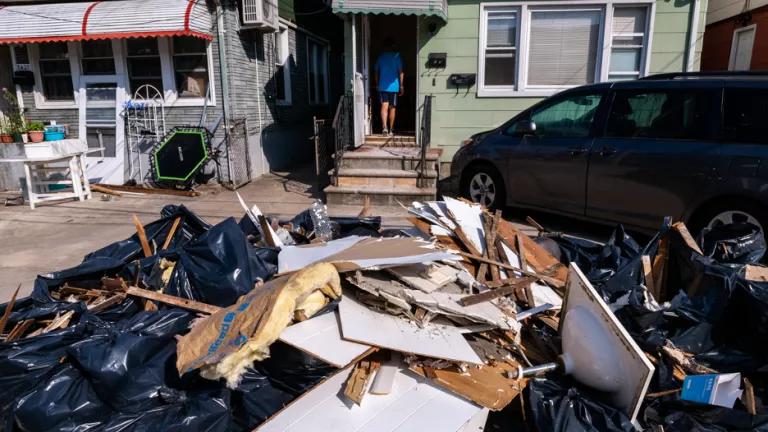Infrastructure Is an Environmental Issue

Any plan to improve U.S. infrastructure must not just meet environmental standards but also enhance our efforts to clean the air, improve water quality, boost health, and improve opportunity for all Americans.
Infrastructure isn’t just about superhighways, mega-airports, and bigger bridges and tunnels. It’s not about squeaking by or steamrolling over the most basic of environmental standards, nor is it about plastering over troubled neighborhoods with concrete in the name of progress.
In fact, it’s the opposite. Infrastructure built with an emphasis on people and the environment can not only improve transportation, create better access to power and energy, increase economic mobility, and bring us into the 21st century but also make our communities more resilient, support fair-wage jobs, improve health, and help address some of our stickiest social issues such as income disparity, systemic racial segregation, and poverty.
After all, it’s some of the infrastructure issues of the past—freeways built through the middle of neighborhoods, the displacement of so-called urban renewal, and a dearth of water drainage in low-investment areas—that have contributed to today’s problems. It’s only by a new approach that we can help fix them.
That is why NRDC will continue to play a leading role in influencing what may become the most significant investment in infrastructure in generations, one whose implementation will be affecting our lives for generations to come.
Our Pledge for Systems Change
We explain in our key principles for infrastructure the environmental issues on which we are leading, including prioritizing (1) projects that deliver economic, social, and environmental benefits through public and private dollars; (2) innovation in efficient water and energy systems; (3) public input and review, and ensuring compliance with environmental policy; (4) flexible funding allocated for local and regional planning, (5) investment in climate resilience projects and smart technology; and (6) clean energy and sustainability jobs.
Our recent work is a testament to our commitment. For example, we helped the residents of Flint, Michigan, obtain redress in the devastating drinking-water crisis that happened because government officials decided to save a buck rather than ensure water safety, and we released an important study uncovering that nearly one-fourth of all Americans are getting drinking water from untested or contaminated water systems. We helped found the Strong, Prosperous, and Resilient Communities Challenge to further sustainable and equitable revitalization projects in six communities. Our work with sustainability projects in Newark, New Jersey, the Watts neighborhood of Los Angeles, and other communities, as well as our concept of High Road Infrastructure, also demonstrates our engagement with sustainable and resilient infrastructure.
There is also our long-standing work on energy efficiency in large buildings with the City Energy Project, which we colead with the Institute for Market Transformation, and our partnerships with the Energy Foundation, the National Housing Trust, and dozens of other organizations to advance energy efficiency in affordable family housing through Energy Efficiency for All.
Infrastructure Week
NRDC is taking an active role this year in Infrastructure Week, participating in the kickoff event featuring Transportation Secretary Elaine Chao. We are also hosting a Capitol Hill briefing with Doug Siglin, executive director of the Anacostia Waterfront Trust; Mae Wu, senior NRDC attorney; Dr. Laura Sullivan of Kettering University and the Flint Water Interagency Coordinating Committee; Linda Bailey, executive director of the National Association of City Transportation Officials; Mustafa Santiago Ali, senior vice president of climate, environmental justice, and community revitalization, Hip Hop Caucus; and Stephanie Gidigbi, NRDC senior advisor.
From our native peoples to every generation thereafter, people in this country have worked to connect through the built environment—railroads, dams, the electric grid, bridges, shipping channels, and an interstate highway system—but our efforts in recent decades have foundered, resulting in neglect and dangerous disrepair. Just some of the statistics:
- Of the United States’ more than 600,000 bridges, almost 4 in 10 are at least 50 years old, and 9.1 percent were structurally deficient in 2016. Some 188 million trips were made across these deficient bridges each day.
- There are an estimated 240,000 water main breaks per year in the United States, wasting more than two trillion gallons of treated drinking water. An estimated $1 trillion will be necessary to maintain service to meet demand over the next 25 years.
- Since September 2010, counties that are home to 96 percent of the total U.S. population (nearly 309 million) have been affected by federally declared weather-related disasters, putting a severe strain on infrastructure due to climate change.
- The nation’s transit systems have been chronically underfunded, resulting in aging infrastructure and a $90 billion backlog for repair and rehabilitation.
The Pressure Is Building
As a result of these issues, some of our communities are more separated than ever from the necessities of clean air and water, resiliency from climate change, clean transportation, and economic opportunity. Adding to the urgency are projections that our population will grow by 70 million over the next 35 years as the planet struggles with global temperature rise.
President Trump has said that his experience as a builder makes him the only president to know how much concrete and rebar is needed for big construction projects, and he foretells of an era of ultra infrastructure fueled by a $1 trillion investment. The complete scope of his vision, we’re told, will be released in a couple of weeks―or “this year.” For the country’s sake, we hope he looks to the environment and listens to the people affected by these important decisions. We simply can’t afford to invest in yesterday’s solutions to meet tomorrow’s challenges.




